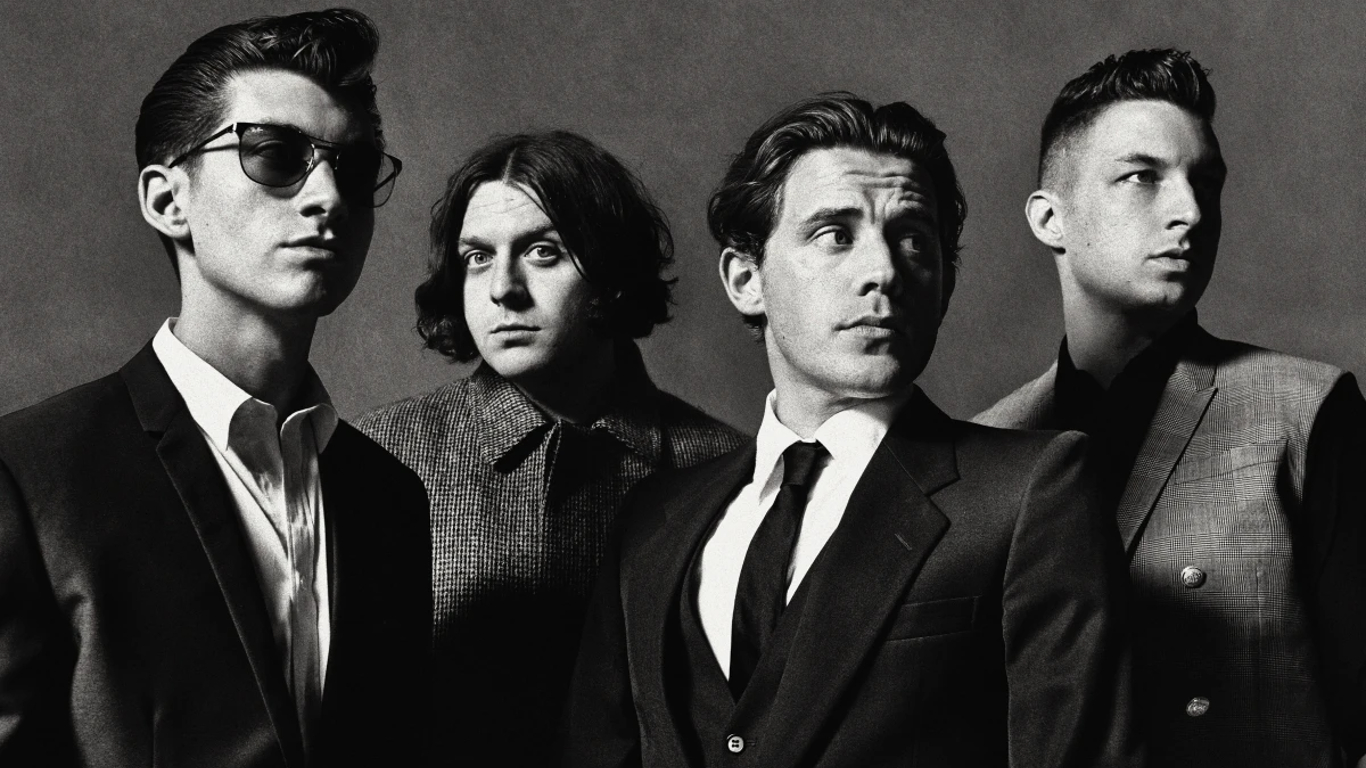For anyone who grappled with their adolescent years between the mid-2000s and early 2010s, chances are, you were familiar with the music of Arctic Monkeys.
Now as presumptive as this claim may be, it stands to reason.
They were arguably the first “internet band” after their demo CDs were ripped and uploaded online — at a time when music sharing was only beginning to take off in earnest.
RELATED: We’re About To Receive Another Mac Miller Album
They became something of a fixture on the festival circuit, headlining everything from Glastonbury to Australia’s own Big Day Out (RIP).
And among certain corners of cyberspace (like Tumblr, back when people still gave a s**t about Tumblr) it seemed near impossible to escape the ubiquity of the Alex Turner-led outfit.
But we didn’t just grow up with Arctic Monkeys. We grew up parallel to them. At least that’s what it felt like from a personal perspective.
Depending on your age, you either viewed them as skinny teens from Sheffield whose adult voices hadn’t even settled into their current tenor; or — in my case — the friends of an elder sibling who you watched figure out life before your very eyes from afar.

When Arctic Monkeys burst onto the scene with their seminal debut album Whatever People Say I Am, That’s What I’m Not — which simultaneously paid tribute to the landscape established by the likes of Oasis, while dictating its eventual course — they were legitimately kids, crafting songs about attempting to get into local clubs and young, unpretentious romance.
There was a beauty and charming earnestness to the album’s simplicity; a relatability to the straightforward street poetry. Over time, while said beauty, charm, and relatability would remain, new lyrical textures would be introduced — rich with emotional dimensions which were a departure from their signature kitchen-sink realism.
The thudding indie anthems with frantic drums and twanging guitars (i.e. ‘Brianstorm,’ ‘This House Is A Circus‘) were balanced by Morrissey and Richard Hawley-esque crooners (i.e. ‘Only Ones Who Know,’ ‘Do Me A Favour,’ ‘505‘) in their sophomore effort Favourite Worst Nightmare.
This softening of jagged edges would continue with Humbug, which also marked a crucial encounter with Queens of the Stone Age’s Josh Homme — an artist who’d have an undeniable impact on the band’s future sound.

No longer were Arctic Monkeys just pimply-faced football hooligans with their polo shirt collars popped up in search of a pint and a quick fuck. They were now an infinitely more worldly bunch with genuine insights about heartbreak and unrequited love. Their native Sheffield brogue became less and less discernible. Hell, even their haircuts improved.
By the time they produced Suck It And See at the legendary Sound City Studios, sonically, you could barely tell they were from North England. Certain phrases and pronunciations gave it away, sure, but the refined (and Americanised) nature of their shimmery tracks from this era contrasted starkly with the in-your-face bangers of Whatever People Say I Am.
Then came AM.
RELATED: To This Day, Drake’s ‘Marvins Room’ Is Still The Perfect Sad Boy Anthem
Neither pivot nor leap from the creative cliffside, this was a 100-point reinvention.
Arctic Monkeys’ most infectious (and easily palatable) album essentially borrowed riffs from classic rockers (i.e. Black Sabbath), gave them a hip-hop/R&B flair, and dressed the whole damn thing in a leather jacket.
Where previous albums featured an element of yearning — with the exception of ‘I Wanna Be Yours‘ (an adaptation of the John Cooper Clarke poem) —romance was only explored through tales of temptresses like the titular Arabella of ‘Arabella‘; or whoever ‘R U Mine‘ had in mind, with its slicked-back-hair-slash-cigarette-hanging-languidly-from-the-mouth brand of sleaze.
Whether you cared for it or not, AM was when Arctic Monkeys became rock royalty — complete with international recognition, sold-out arena tours, and sex appeal. To this day, its most popular tracks remain the most streamed on Spotify (alongside the achingly vulnerable ‘505‘).
If that isn’t the perfect illustration of becoming self-assured in your own identity as an adult, then I don’t know what is.
















